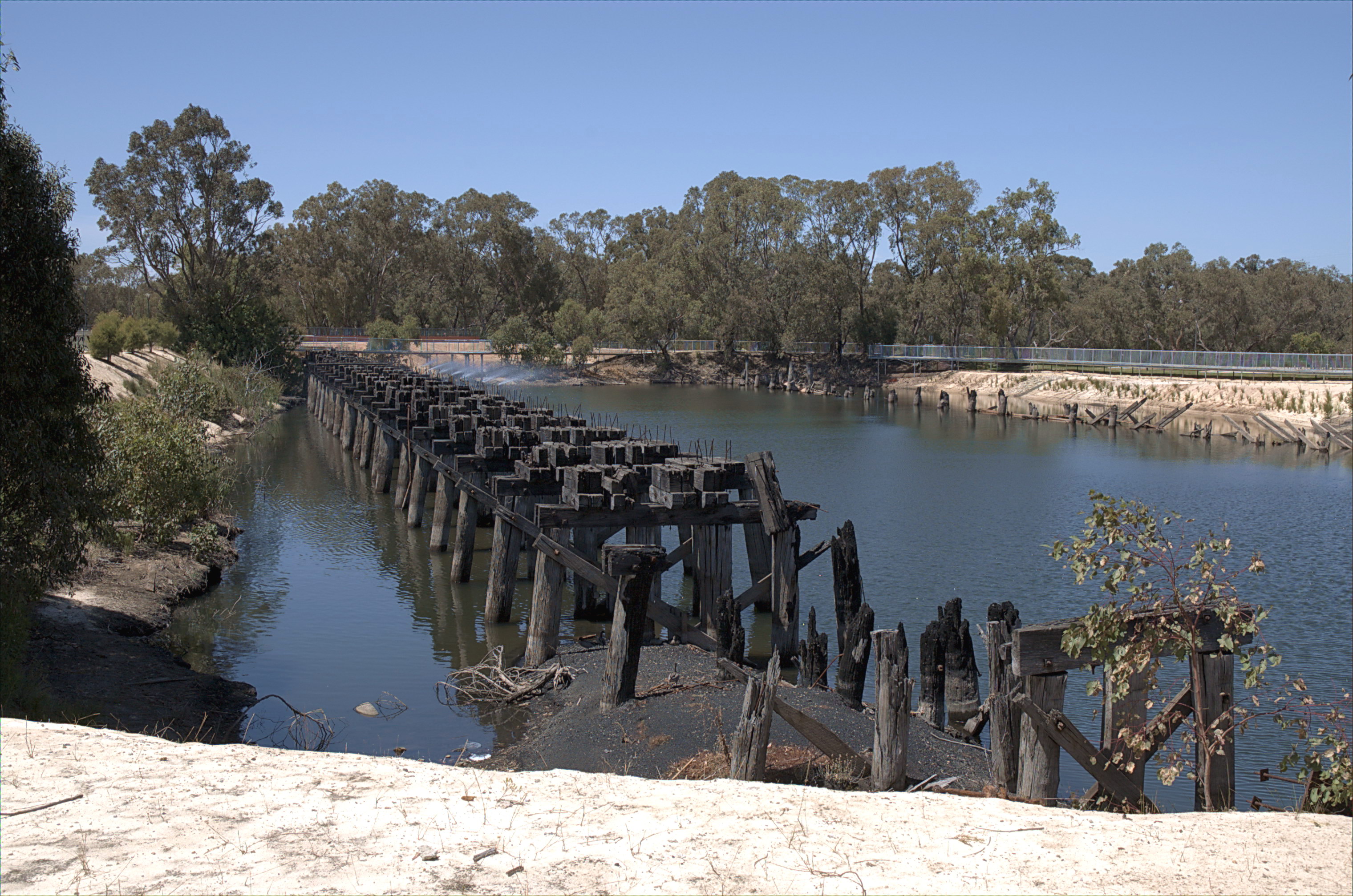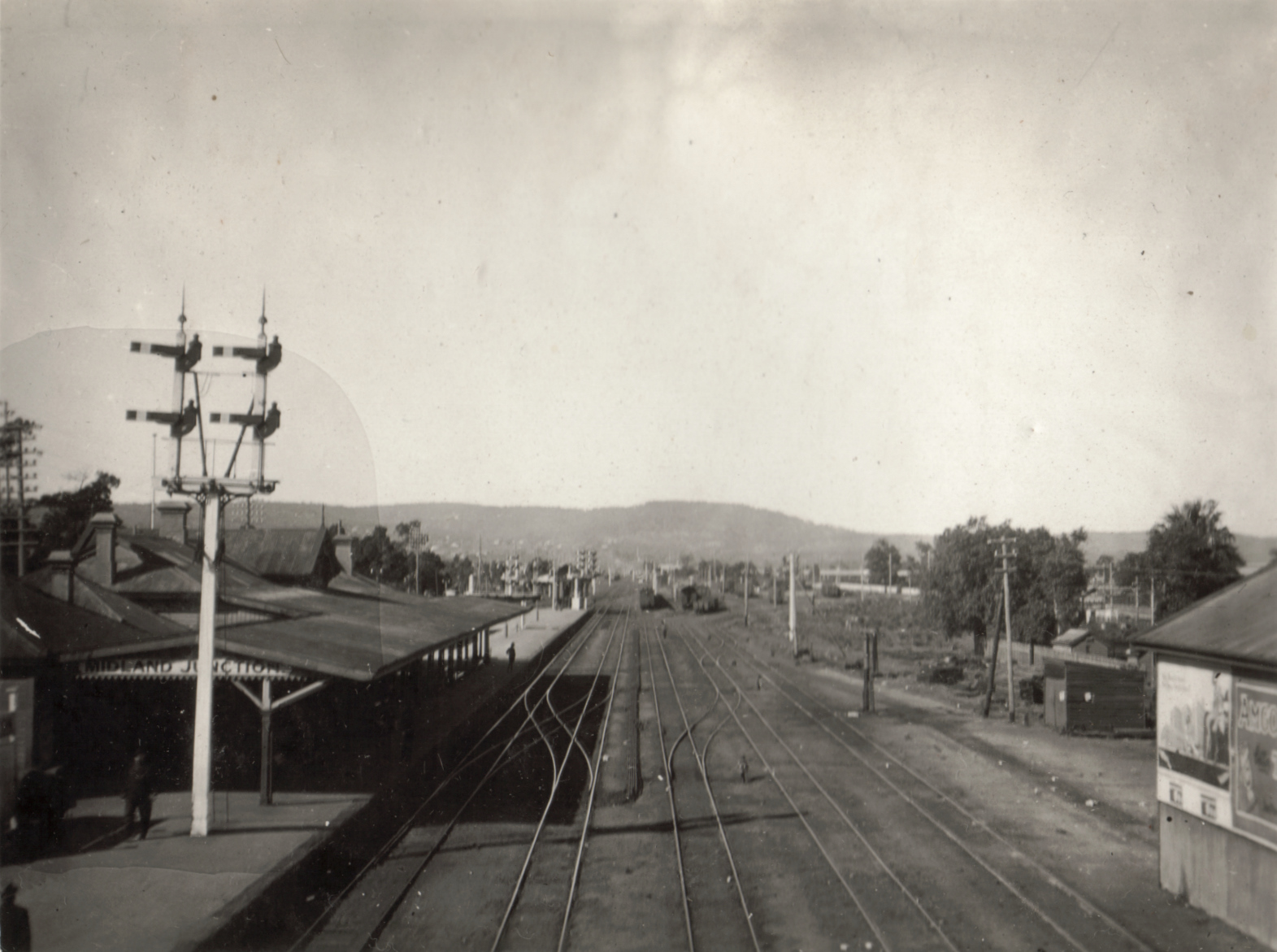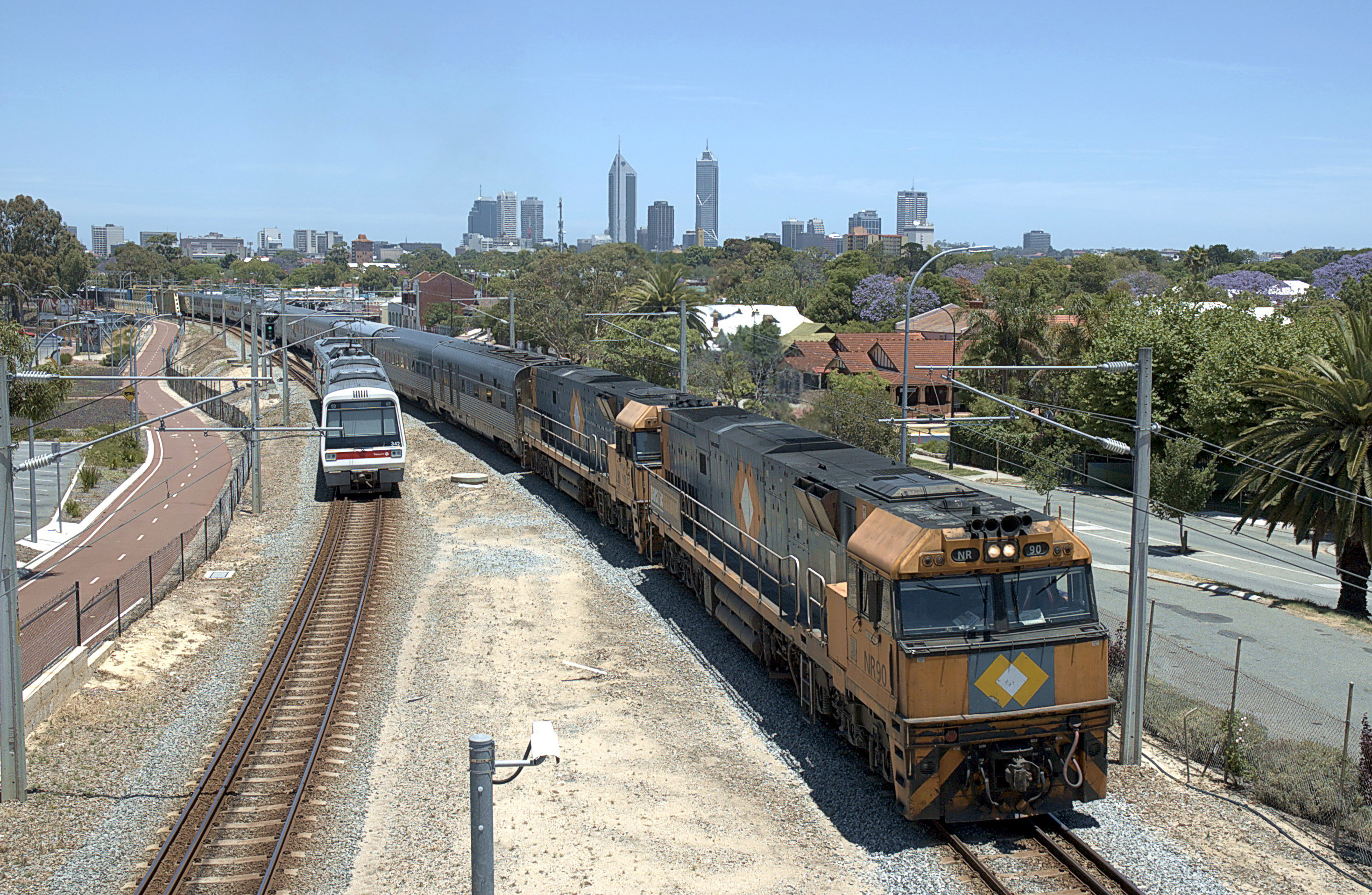|
WAGR Dm Class
The WAGR Dm class was a class of 4-6-4T tank locomotive operated by the Western Australian Government Railways (WAGR) between 1945 and 1971. Background World War II was a major setback for Western Australia's railway system. The need to move large numbers of troops and material had taken its toll on the ability of the railways to continue the construction of much needed motive power. During the war years only 13 new locomotives were built, three WAGR S Class, S class and 10 Australian Standard Garratts. By 1944, approximately a quarter of the WAGR's locomotive fleet was out of action pending maintenance. Much of it was over forty years old. History The Dm class was based on the earlier WAGR D Class, D class but differed significantly in the addition of large boiler-length side tanks, and was built by converting older WAGR E Class, E class tender locomotives. They were built to haul suburban passenger services in Perth. They were also used as bank engines on the steeply graded Mi ... [...More Info...] [...Related Items...] OR: [Wikipedia] [Google] [Baidu] |
Midland Railway Workshops
The Midland Railway Workshops in Midland, Western Australia, were the main workshops for the Western Australian Government Railways (WAGR) for over 80 years. History The first railway workshops in Western Australia were located at Fremantle and shifted to Midland in 1904. The Midland Railway Workshops were involved with all WAGR rolling stock and engine construction and maintenance. Steam engines continued to operate on mainline service until 1971, and all major maintenance occurred at the workshops. Workforce Generations of workers at the workshops had considerable numbers of European migrants who arrived in Australia with limited English language, and there were significant groups of Italian migrants in the workforce. The workforce of the workshops had a rich history and, since closing, there have been projects to record oral history and collect information about the place and people involved. Closure In April 1993, the Richard Court Liberal State Government announced tha ... [...More Info...] [...Related Items...] OR: [Wikipedia] [Google] [Baidu] |
Midland Junction Railway Station
The Midland Junction railway station was an important junction station on the Eastern Railway of Western Australia until its closure in 1966. Its history started on 1 March 1886 when Frederick Broome, then Governor of Western Australia, turned the first sod. It was the first railway station in Midland Junction and was replaced by the Midland station west, across the tracks from the Midland Railway Workshops. Junction era Midland Junction was an aptly named locality and railway station, as it had the following services leaving from its platforms: * the Upper Darling Range Railway or Zig Zag railway to Kalamunda until 1949 * Mundaring (and Mundaring Weir until 1952) until 1954 * Bellevue until 1965 * Chidlow until 1965 * Midland Railway of Western Australia until 1963 It was in effect the point at which all rail services in the Western Australian network had to pass byexcept for the South West line to Bunbury. It was also a stopping point for Western Australi ... [...More Info...] [...Related Items...] OR: [Wikipedia] [Google] [Baidu] |
3 Ft 6 In Gauge Locomotives Of Australia
3 (three) is a number, numeral and digit. It is the natural number following 2 and preceding 4, and is the smallest odd prime number and the only prime preceding a square number. It has religious or cultural significance in many societies. Evolution of the Arabic digit The use of three lines to denote the number 3 occurred in many writing systems, including some (like Roman and Chinese numerals) that are still in use. That was also the original representation of 3 in the Brahmic (Indian) numerical notation, its earliest forms aligned vertically. However, during the Gupta Empire the sign was modified by the addition of a curve on each line. The Nāgarī script rotated the lines clockwise, so they appeared horizontally, and ended each line with a short downward stroke on the right. In cursive script, the three strokes were eventually connected to form a glyph resembling a with an additional stroke at the bottom: ३. The Indian digits spread to the Caliphate in the 9th ... [...More Info...] [...Related Items...] OR: [Wikipedia] [Google] [Baidu] |
Steam Locomotives Of Western Australia
Steam is a substance containing water in the gas phase, and sometimes also an aerosol of liquid water droplets, or air. This may occur due to evaporation or due to boiling, where heat is applied until water reaches the enthalpy of vaporization. Steam that is saturated or superheated is invisible; however, "steam" often refers to wet steam, the visible mist or aerosol of water droplets formed as water vapor condenses. Water increases in volume by 1,700 times at standard temperature and pressure; this change in volume can be converted into mechanical work by steam engines such as reciprocating piston type engines and steam turbines, which are a sub-group of steam engines. Piston type steam engines played a central role in the Industrial Revolution and modern steam turbines are used to generate more than 80% of the world's electricity. If liquid water comes in contact with a very hot surface or depressurizes quickly below its vapor pressure, it can create a steam explosion. Types ... [...More Info...] [...Related Items...] OR: [Wikipedia] [Google] [Baidu] |
Railway Locomotives Introduced In 1945
Rail transport (also known as train transport) is a means of transport that transfers passengers and goods on wheeled vehicles running on rails, which are incorporated in tracks. In contrast to road transport, where the vehicles run on a prepared flat surface, rail vehicles (rolling stock) are directionally guided by the tracks on which they run. Tracks usually consist of steel rails, installed on sleepers (ties) set in ballast, on which the rolling stock, usually fitted with metal wheels, moves. Other variations are also possible, such as "slab track", in which the rails are fastened to a concrete foundation resting on a prepared subsurface. Rolling stock in a rail transport system generally encounters lower frictional resistance than rubber-tyred road vehicles, so passenger and freight cars (carriages and wagons) can be coupled into longer trains. The operation is carried out by a railway company, providing transport between train stations or freight customer facili ... [...More Info...] [...Related Items...] OR: [Wikipedia] [Google] [Baidu] |
List Of Western Australian Locomotive Classes
This is a list of Western Australian locomotive classes, being classes of locomotive that have worked on railways in Western Australia. The majority of Western Australian steam locomotive classes were operated by the Western Australian Government Railways (WAGR). Regularly scheduled steam working ceased on WAGR mainline operations after 1971 - with only special excursion or enthusiasts trains being hauled by steam after that time. Other significant operators include the Commonwealth Railways, the Midland Railway Company of Western Australia and State Saw Mills. Many private organisations also operated steam locomotives in Western Australia. Locomotives Western Australian Government Railway Midland Railway Company of Western Australia (In order of introduction on the Midland railway.) Commonwealth Railways Other Diesel locomotives BHP (In order of introduction on the Goldsworthy and Mount Newman railways.) * CM39-8 * CM40-8M * CM40-8 * GE AC6000CW * EMD SD ... [...More Info...] [...Related Items...] OR: [Wikipedia] [Google] [Baidu] |
Rail Transport In Western Australia
Railways in Western Australia were developed in the 19th century both by the Government of Western Australia and a number of private companies. Today passenger rail services are controlled by the Public Transport Authority (a department of the Government of Western Australia) through Transperth, which operates public transport in Perth, and Transwa, which operates country passenger services. Great Southern Rail operates the ''Indian Pacific''. The interstate standard gauge line east from Kalgoorlie is owned by the Australian Rail Track Corporation, with most other lines leased by the state to Arc Infrastructure. Freight rail was privatised in 2000. General intrastate freight is mainly operated by Aurizon, while grain traffic is also operated by Aurizon under contract to the CBH Group. Interstate traffic is operated by Pacific National and SCT Logistics. Aurizon also operate an interstate mineral sands service to Kwinana from Broken Hill for Tronox. A number of private iron ... [...More Info...] [...Related Items...] OR: [Wikipedia] [Google] [Baidu] |
ADK/ADB Class Diesel Multiple Unit
The ADK class are a class of diesel multiple units that were previously operated by Western Australian Government Railways (WAGR) in Perth, and later Transdev Auckland on Auckland's suburban rail network, and are currently operated by MetroBus in Maputo, Mozambique. Originally built by Commonwealth Engineering and the Midland Railway Workshops for WAGR in the late 1960s, all but one were sold in 1993 to New Zealand Rail, and were then owned by Auckland Transport. The units were completely withdrawn from service in New Zealand on 5 December 2014, following completion of electrification of Auckland's network. History In 1967 and 1968, ten two-carriage stainless steel sets were manufactured for the Western Australian Government Railways. Each set consisted of an ADK power car manufactured by Commonwealth Engineering, and an ADB trailer built by the WAGR's Midland Railway Workshops. The ADK cars were manufactured in Granville and railed via Melbourne and Adelaide requiring a chang ... [...More Info...] [...Related Items...] OR: [Wikipedia] [Google] [Baidu] |
Eastern Railway (Western Australia)
The Eastern Railway is the main railway route between Fremantle and Northam in Western Australia. It opened in stages between 1881 and 1893. The line continues east to Kalgoorlie as the Eastern Goldfields Railway. Initial section The first sod of the Fremantle-Guildford Railway was turned by Governor Ord at Guildford on 3 June 1879. The event coincided with the celebration of the 50th anniversary of settlement of Western Australia. The alignment of this first section of the railway has remained generally unchanged since it opened on 1 March 1881 and now forms part of Transperth's Fremantle Line and Midland Line. Notable changes to this section include: * Electrification of the Perth suburban rail network in 1991 * Sinking of Subiaco station in 1998 as part of Subi Centro * Sinking of the line through the former Perth Yards as part of Perth City Link The centenary of the railway was celebrated on 1 March 1981. First route The ''First Route'', from to , was open ... [...More Info...] [...Related Items...] OR: [Wikipedia] [Google] [Baidu] |
Chidlow Railway Station
The extension of the Eastern Railway line in Western Australia to Chidlow's Well in 1884 was immediately useful to those in the region, to quote the West Australian of 17 April 1885: Up until its closure, it had tearooms, and the overnight sleeper train ' The Westland' to Kalgoorlie had a refreshment stop at Chidlow. In some regularly reprinted photographs of the station buildings and platform the sign is for Chidlow's Well Refreshment Station. In all Working Timetables (WTT) during the operation of this line, there was an arrival and departure time, owing to either taking on water for steam engines, or change in crew. The Bellevue to Chidlow railway line involved the encounter with the Darling Scarp The Darling Scarp, also referred to as the Darling Range or Darling Ranges, is a low escarpment running north–south to the east of the Swan Coastal Plain and Perth, Western Australia. The escarpment extends generally north of Bindoon, to th ... requiring extra powe ... [...More Info...] [...Related Items...] OR: [Wikipedia] [Google] [Baidu] |
Bank Engine
A bank engine (United Kingdom/Australia) (colloquially a banker), banking engine, helper engine or pusher engine (North America) is a railway locomotive that temporarily assists a train that requires additional power or traction to climb a gradient (or ''bank''). Helpers/bankers are most commonly found in mountain divisions (called "helper districts" in the United States), where the ruling grade may demand the use of substantially greater motive power than that required for other grades within the division. Historic practice Helpers/bankers were most widely used during the age of steam, especially in the American West, where significant grades are common and trains are long. The development of advanced braking systems and diesel-electric or electric locomotives has eliminated the everyday need for bankers/helpers in all but a few locations. With the advent of dynamic brakes on electric or diesel-electric locomotives, helpers/bankers can also be used to provide more braking ... [...More Info...] [...Related Items...] OR: [Wikipedia] [Google] [Baidu] |
4-6-4T
Under the Whyte notation for the classification of locomotives, represents the wheel arrangement of four leading wheels, six powered and coupled driving wheels and four trailing wheels. In France where the type was first used, it is known as the Baltic while it became known as the Hudson in most of North America. Overview Tender locomotives The 4-6-4 tender locomotive was first introduced in 1911 and throughout the 1920s to 1940s, the wheel arrangement was widely used in North America and to a lesser extent in the rest of the world. The type combined the basic design principles of the 4-6-2 type with an improved boiler and larger firebox that necessitated additional support at the rear of the locomotive. In general, the available tractive effort differed little from that of the 4-6-2, but the steam-raising ability was increased, giving more power at speed. The 4-6-4 was best suited to high-speed running across flat terrain. Since the type had fewer driving wheels than carrying w ... [...More Info...] [...Related Items...] OR: [Wikipedia] [Google] [Baidu] |






